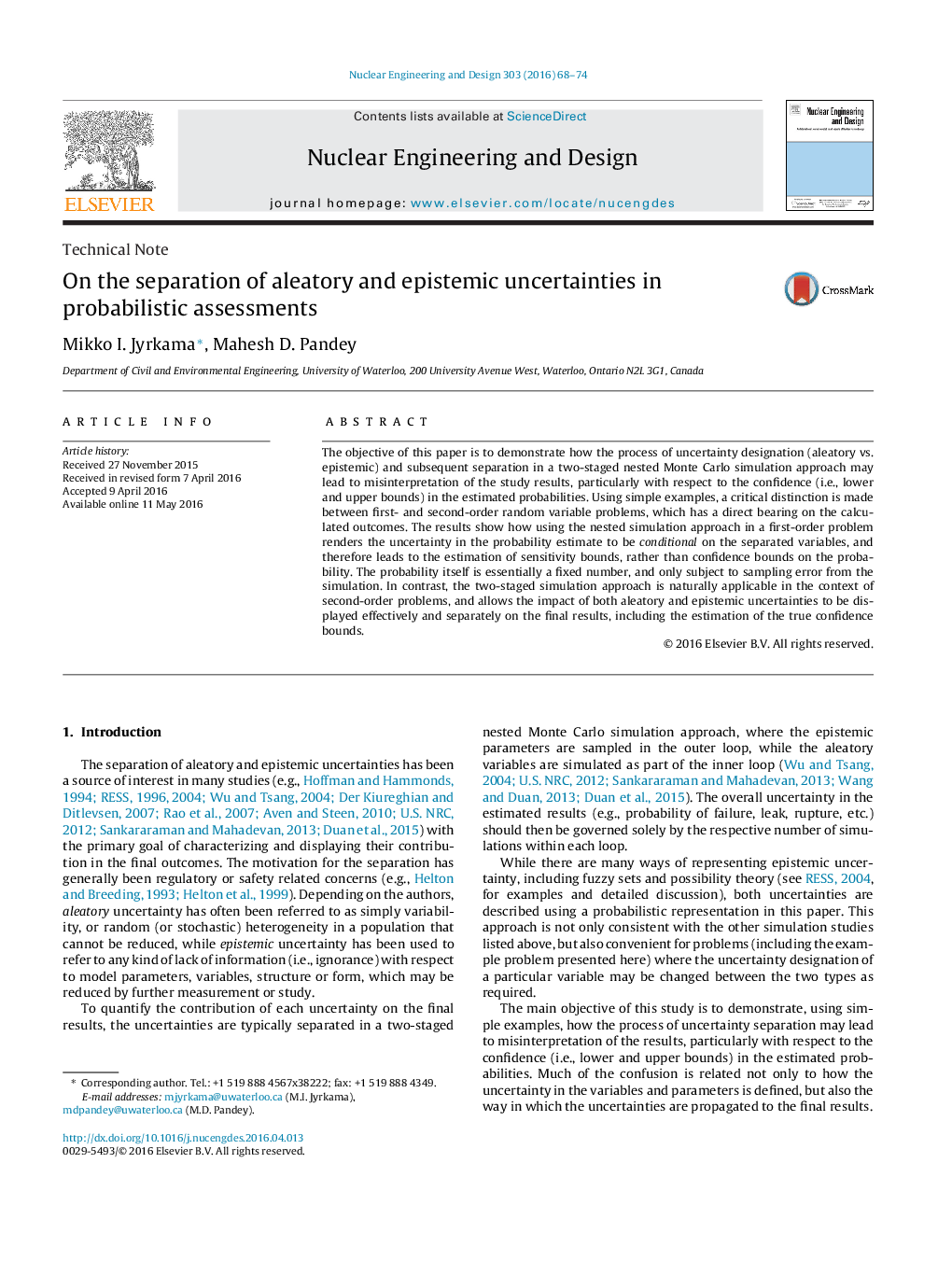| Article ID | Journal | Published Year | Pages | File Type |
|---|---|---|---|---|
| 295940 | Nuclear Engineering and Design | 2016 | 7 Pages |
The objective of this paper is to demonstrate how the process of uncertainty designation (aleatory vs. epistemic) and subsequent separation in a two-staged nested Monte Carlo simulation approach may lead to misinterpretation of the study results, particularly with respect to the confidence (i.e., lower and upper bounds) in the estimated probabilities. Using simple examples, a critical distinction is made between first- and second-order random variable problems, which has a direct bearing on the calculated outcomes. The results show how using the nested simulation approach in a first-order problem renders the uncertainty in the probability estimate to be conditional on the separated variables, and therefore leads to the estimation of sensitivity bounds, rather than confidence bounds on the probability. The probability itself is essentially a fixed number, and only subject to sampling error from the simulation. In contrast, the two-staged simulation approach is naturally applicable in the context of second-order problems, and allows the impact of both aleatory and epistemic uncertainties to be displayed effectively and separately on the final results, including the estimation of the true confidence bounds.
